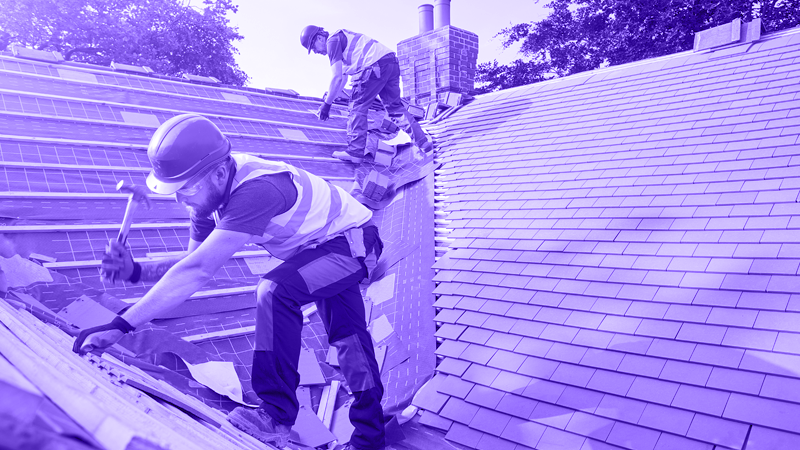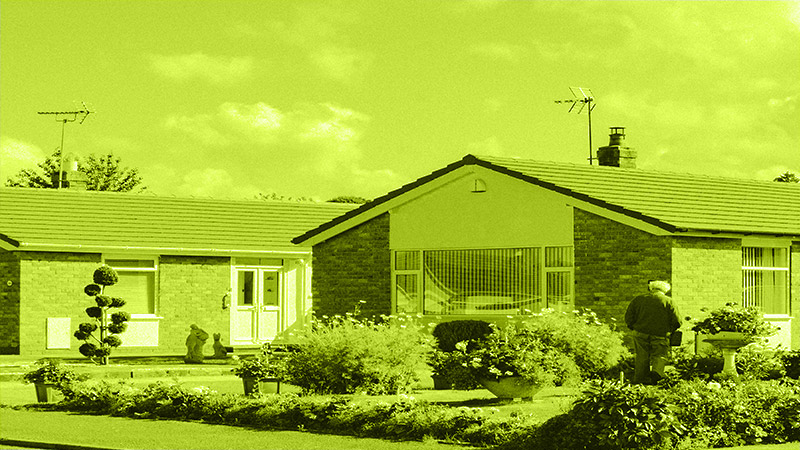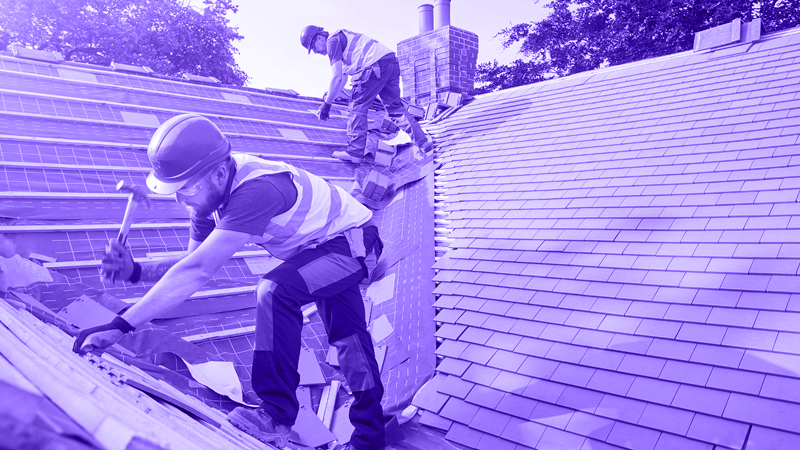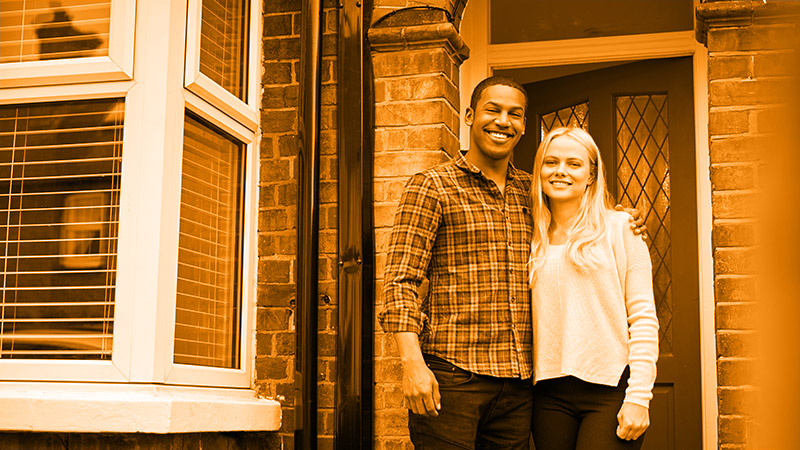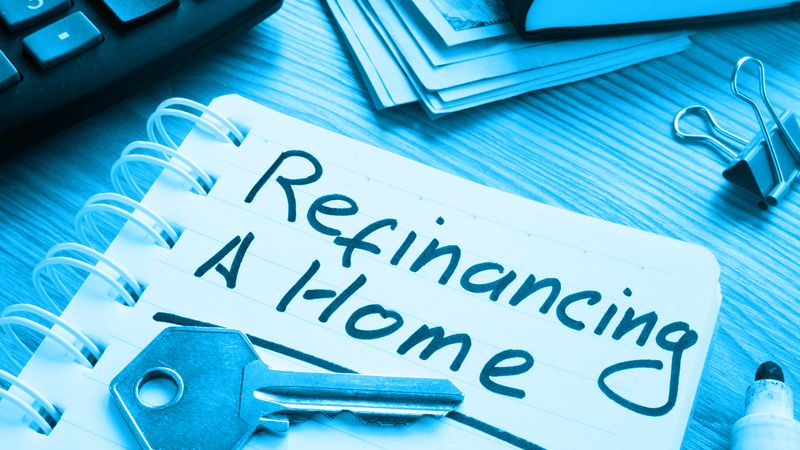In order to carry out and pay for home improvements, many homeowners wish to release equity in their property by remortgaging.
The funds are then used to make improvements to the property inevitably, increasing the value of the estate.
This is just one of the many reasons for remortgaging, some other common reasons people remortgage their homes include releasing equity or to buy new property.
Is it a good idea to remortgage for home improvements?
All mortgage applications are assessed based on your individual circumstances.
It is at this point of assessment where the lender will tell you if a remortgage for home improvements is feasible.
For many, renovating their current property seems less of an expense and hassle than moving home.
For example, you may wish to add a bedroom to your property.
In this case, it would be more viable to build an extension than move to a home with an extra bedroom.
You also need to consider if there are any early repayment charges on your current mortgage.
Call us today on 03330 90 60 30 or contact us to speak to one of our friendly advisors.
Remortgaging to fund home improvements
What factors will be taken into consideration?
Lots of customers want to remortgage their property to fund home improvements whether it be an extension, renovations or a loft conversion.
The list of home improvements is vast and depends on what you want to get out of the remortgage.
There are a few things that are taken into consideration when you are remortgaging for home improvement.
We have listed a few below which we will explore in more detail:
- Affordability
- Cost of the Home Improvement
- Credit History
- Equity
- Financial Circumstances
- Type of Property
Affordability
You will have to prove to the lender that if you remortgage, you can afford the repayments.
The lender will consider all aspects of your financial position past and present. They will look at income vs expenditure including any other debts you may have.
The amount you can borrow totally depends on the lender’s criteria.
There are some lenders on the market that are willing to lend more than others but this is dependant on your income and personal circumstances.
To give an example:
You earn £30,000 a year and the lender is willing to lend you 4 times your salary
£30,000 x 4 = £120,000 Maximum Loan Amount
Some lenders will take bonuses or overtime into consideration which could see you eligible to borrow more.
Cost of the Home Improvement
The lender will consider the cost of the home improvements in their assessment to give you an idea of the amount you will need to get from remortgaging.
There is a lot to consider when calculating the amount of money, you will need for home improvement.
These range from planning permission, builders, materials etc. It is sometimes best to anticipate that you will need a little extra in the event that an unforeseen cost should occur.
Once your lender approves the total cost needed from the remortgage, they will help you search for the best rates available on the remortgage market.
It is important that you make the remortgage work for you in a cost-effective way.
Example Scenario for Remortgaging for Home Improvements:
Your home is worth £300,000 and your current mortgage is for £150,000.
You want to build an extension onto your property that will cost £25,000.
When remortgaging, you can switch to a brand-new mortgage for £175,000.
This will pay off your current mortgage and leave you with the £25,000 you need for the home improvement.
Our experts will tell you that there are many things to consider before remortgaging as it may be more beneficial financially for you to do a further advance with your existing lender.
All options will be considered.
We take the hard work out of the process by considering the following for you:
- Is the home improvement viable?
- How much equity do you have in comparison to the amount you owe on your current mortgage?
Related quick help remortgage guides:
- Remortaging on maternity leave
- How soon can I remortgage?
- Shared ownership remortgages
- How long does it take to remortgage?
- How to remortgage for an extension
Your Credit History
If you have a poor financial history, there are specialist lenders on the market who deal specifically in mortgages for customers with adverse credit.
The age and type of your credit issues will have an impact on interest rates.
Another thing to factor into the process is the amount of outstanding debt you have on credit cards or loans.
Call us today on 03330 90 60 30 or contact us to speak to one of our friendly advisors.
When the lender calculates your affordability, they consider the repayments you are making to your creditors when examining your outgoings.
If you have a high balance on a credit card for example, then it might be in your interest to reduce that amount before you apply for a remortgage.
Get in touch with our expert advisors if you have adverse credit and are considering a remortgage for home improvements.
It’s a good idea to familiarise yourself with the costs of remortgaging, especially remortgaging with bad credit since you are likely to be offered a higher interest rate.
Equity
The amount of equity you will have depends on how long you have owned your property.
You should accrue some equity if you have owned the property for a number of years, especially if the value of property in your area has increased.
This will mean you have even more equity to work with.
Personal Circumstances
Most lenders will consider the applicant’s age in their assessment.
The minimum age for most applicants is 18 and some lenders now don’t stipulate a maximum age.
This emphasises the importance of affordability however, the lender will want to make sure that whatever age you are, you can afford the repayments.
Types of home improvements that you may remortgage for:
Remortgage for an extension
A standard extension can cost anywhere in the excess of £30,000 so it isn’t unreasonable to remortgage to front the cost of the extension.
You may need planning permission, it is a good idea to check this with your local planning office before you begin any work.
Remortgage for loft conversion
Many people covert their lofts to create an extra room in their home.
This can be a bedroom or an office space. Either way, the cost can run into an excess of £15,000 at best.
Remortgaging to carry out a loft conversion is a great way to borrow the funds you need whilst maintaining a low-interest rate, depending on your lender.
Loft conversions may add value to your home so it is worth thinking about remortgaging after the conversion to avail of even lower rates as you will have more equity in your property.
Remortgaging for property renovation
It is possible to remortgage even if your property is in need of significant repair.
Ideally, your remortgage would enable you to carry out the necessary renovations to the property to bring it up to a standard considered habitable by the lender.
To be considered habitable, a property must have a functioning kitchen and bathroom as well as a sealed and secure roof.
It may be case that your property is already habitable, but you would just like to modernise it. Either way, you may be considered for a remortgage.
You can run into issues with a renovation mortgage if, at the time of valuation, a serious problem is detected. This could be an issue with electrics or plumbing.
If this happens, the lender may ask for a retainer. Basically, the lender will agree to the mortgage but will hold the amount of money they think is required to fix the issue.
Once they are satisfied that you have made the necessary repairs, the rest of the money will be released.
Related reading:
- Reasons for remortgaging.
- Remortgaging to release equity.
- Remortgaging to buy another property.
- Remortgaging with bad credit.
- Remortgaging for home improvements.
- I own my house outright can I remortgage?
- Capital raising mortgages.
Should I remortgage after making the improvements or before?
If your improvements will add value to your property, then it might be a better idea to remortgage after the home improvements have been carried out should you need to release equity in the property.
You may also be eligible for lower interest rates if your loan is for a lesser amount of the value of the property.
Are there any alternatives to remortgaging for home improvements?
Yes, there is also the option of a secured loan. Put simply, a secured loan is a loan set against your current assets, i.e. your home.
This is a riskier option though and you must be aware that if you cannot keep up with the loan repayments, you might lose your home through repossession.
You really should weigh up the cost of the home improvements against the risk of potentially losing your home before making your decision.
It is also worth noting that if you do go down the secured loan route, you have to make the repayments as well as your current mortgage payments.
Affordability and responsibility play a major role in a secured loan application.
You may also be eligible for a further advance with your current lender.
Related quick help remortgage guides:
- Remortaging on maternity leave
- How soon can I remortgage?
- Shared ownership remortgages
- How long does it take to remortgage?
- How to remortgage for an extension
Will I be able to afford a remortgage for home improvements?
This is entirely up to you. When you make your application for a remortgage for home improvements, the lender will heavily assess your affordability.
You need to be able to demonstrate that you can afford the repayments.
The amount that you can borrow based on your earnings varies from lender to lender with some permitting 3 or 4 times your income and others permitting more.
Our aim is to find you the best remortgage deal available on the market if this is the best option for you. If you need a specialist lender, we can also help with that.
We want to secure the remortgage that is right for you and your circumstances.
Call us today on 03330 90 60 30 or contact us to speak to one of our friendly advisors.
